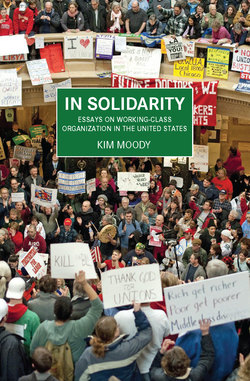In Solidarity

Реклама. ООО «ЛитРес», ИНН: 7719571260.
Оглавление
Kim Moody. In Solidarity
Contents
Отрывок из книги
List of Tables
.....
American labor leaders never tire of referring to their members as “middle class,” part of the great washed masses between the “dirt poor” and the “filthy rich.” This is, of course, nonsense that separates better-off workers from their poorer brothers and sisters—and to some extent white from Black and brown. There is, however, an actual middle class, not between the rich and poor but between capital and labor. There can be no clear definition of this middle class or even of where it begins and ends in relation to the working class. As Marx noted in his very brief and unfinished section in Capital, Volume III, entitled simply “Classes,” “It is undeniably in England that this modern society and its economic articulation is most widely and classically developed. Even here, though, this class articulation does not emerge in pure form. Here, too, middle and transitional levels always conceal the boundaries.”32 In a society constantly changing under the pressures of capital accumulation, it can hardly be otherwise.
The word “transitional” is particularly interesting, as it would appear to refer to groups moving from one class to another, most commonly a process of proletarianization. While Marx’s prediction that the petit-bourgeoisie and other middle layers would disappear has proven to be wrong, there has been an undeniable tendency for formerly middle-class occupations to take on more and more of the characteristics of working-class labor and life. The “autonomy” of many professions has been eroded as capital pushes them for greater output and longer hours and directs their work more closely: that is, becomes “purely despotic.” Not surprisingly, more professionals have been joining unions. An outstanding example of this, covered elsewhere in this collection, is nurses, who have been joining unions and striking at higher rates than any other group.33
.....